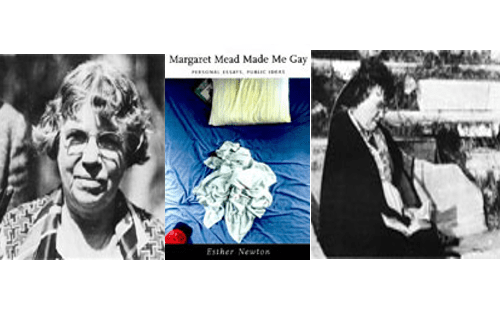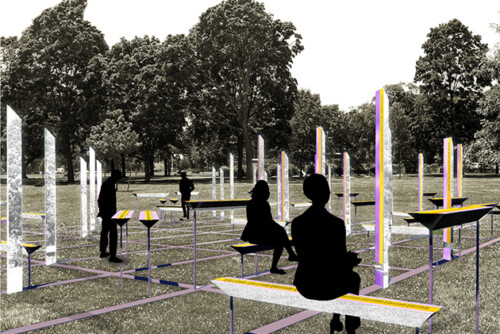This article features video clips, shown with the permission of the Margaret Mead Estate. To view each clip, please click on the corresponding still image. At this time, ablility to download the video clips may be limited.
Every year, I lecture on Margaret Mead’s and Gregory Bateson’s films in my graduate seminar on Culture and Media, and every year my file gets thicker and thicker. So the challenge will be keeping me to my time, because it’s enormously fascinating. Since I watch Mead’s films every year with some detail, I see different things in them, depending on what other things I am thinking about. But consistently, one of my favorite lines in her films, that she repeats, which is not reproduced in any other film I’ve ever seen, is, “Now watch this very carefully, or you’ll miss everything.” [Laughter] It is kind of my watchword about her work, and about some of the things that have occurred since then that she might never have predicted, but which I think would have made her happy.
That’s what I want to look at today. I’ve been doing a project for about ten years looking at the development of film and video in indigenous communities, which has become an extremely active movement worldwide in North America and also in Australia, New Zealand and various places in Latin America. I’ve been working mostly with Australian Aboriginal people. One of the things that has been very interesting in this movement is how indigenous activists have gone back to early ethnographic films, from the 1890s on, and recuperated those films as the basis for a whole variety of claims on their cultural continuity: land claims, cultural property rights and religious freedom, to name a few. Thus, the very way in which these films were initially made by anthropologists such as Mead, as archival records in anticipation of the disappearance of indigenous cultural worlds, has, in fact, been historically resignified as evidence of their persistence into the present. Perhaps the most famous case is that of Alfred Cord Haddon’s footage taken of Mer Islanders in 1890 in the Torres Straits, just north of Australia. A century later, in 1992, in Australia, it became one of the pieces of evidence introduced to the High Court as part of historical recognition of their claims to land in Australia – which has been an extraordinary revolution. These kinds of changes in the meaning and ownership of ethnographic films is part of what I think about when I emphasize Mead’s narration, “Now watch this very carefully.” The films she made, and many other in that same tradition, have legacies that were completely unanticipated. And this is not something that undermines Mead’s authority or intention at the time. Indeed, the idea that film archives would go on to have lives of their own at some point in the future was something that Margaret Mead not only recognized; this was one of the reasons that she made films. In other words, she anticipated the revolution in visual anthropology in the present. Although her actual work did not necessarily indicate that spirit, nor did her writings and her teachings and the ways in which she helped shape this field (which Nancy and Elaine will talk about in more detail), her recognition that things would change in unanticipated ways in the ways that archives would be used has proven true, as has her insight into the increasingly significant role of media in the shaping of contemporary cultural lives.
It’s well known, indeed, that Margaret Mead paid a cost for her capacity and desire to reach the public. She was, of course, a tireless advocate for reaching popular audiences and used the mass media with great skill to that effect. Her accessible writing style and her interest in reaching people through her books, through her column in Redbook, and via numerous television appearances (62 in 20 years), and through her use of film and photography, most notably during her research in Bali and Papua, New Guinea, made her, perhaps, the most well-known anthropologist of her time, if not of all time. Yet, she never had the same kind of respect and recognition from the Academy accorded some of her more sober, male contemporaries – in part, some would argue, perhaps because of that popularity, a point which was already been made. Indeed, she was open, also, to experimenting with other media forms in a way that presages the work in the present. If public intellectuals were eschewed in the past, they are in a sense being celebrated these days in the world of celebrity intellectuals. Mead was considered controversial, for example, in her vocal approval of the 1972, 12-part precursor of reality TV, “An American Family,” that witnessed, on-camera, the collapse over the year of the Loud household – which first appeared to be an idyllic, upper-middle-class nuclear family. Mead, almost singularly, regarded this project on the Loud family as a revolutionary, wonderful and daring step in the use of mass media. While most other intellectuals were condemning it, she was comparing the idea of presenting a family on TV to that of what novels did in the nineteenth century for public life, suggesting that it might have a broad impact on our culture. And, indeed, that was certainly prescient. (I don’t know what she would have done with “Survivor.”)
Thinking about these dimensions of her career as a public intellectual, I listened with some interest last week to a talk by anthropologist George Marcus who was speaking at NYU. He has characterized the work of American anthropologists such as Boaz and Mead as a kind of cultural critique, triangulating their criticisms of American society through the lens of other cultures and the authority of scientific research. He saw their work as a precursor to the 1980s focus, which he celebrated, on the experimental possibilities of ethnographic writing and anthropology. Looking ahead to the twenty-first century, he argued that experimentation is shifting from the arena of writing itself to its reception and circulation in multiple arenas. Well, he just woke up to what Margaret Mead knew.
I’d like to now show two little clips. Let me introduce them quickly. The first is from a 1950 National Film Board program called Four Families, and it gives you a flavor of the times and the extraordinary presence Margaret Mead had in the world. Canada has always had more intellectual television than we have, so they were probably more tolerant of someone like Mead appearing on mass media. It’s not atypical of television at the time.
You can see in this clip very dramatically the way that Margaret Mead is positioning the life worlds of other cultures, in particular the life worlds of mothers, children and babies as possible points of empirical contrast to our own, and ways that could introduce interventions into the way we thought about our own world.



